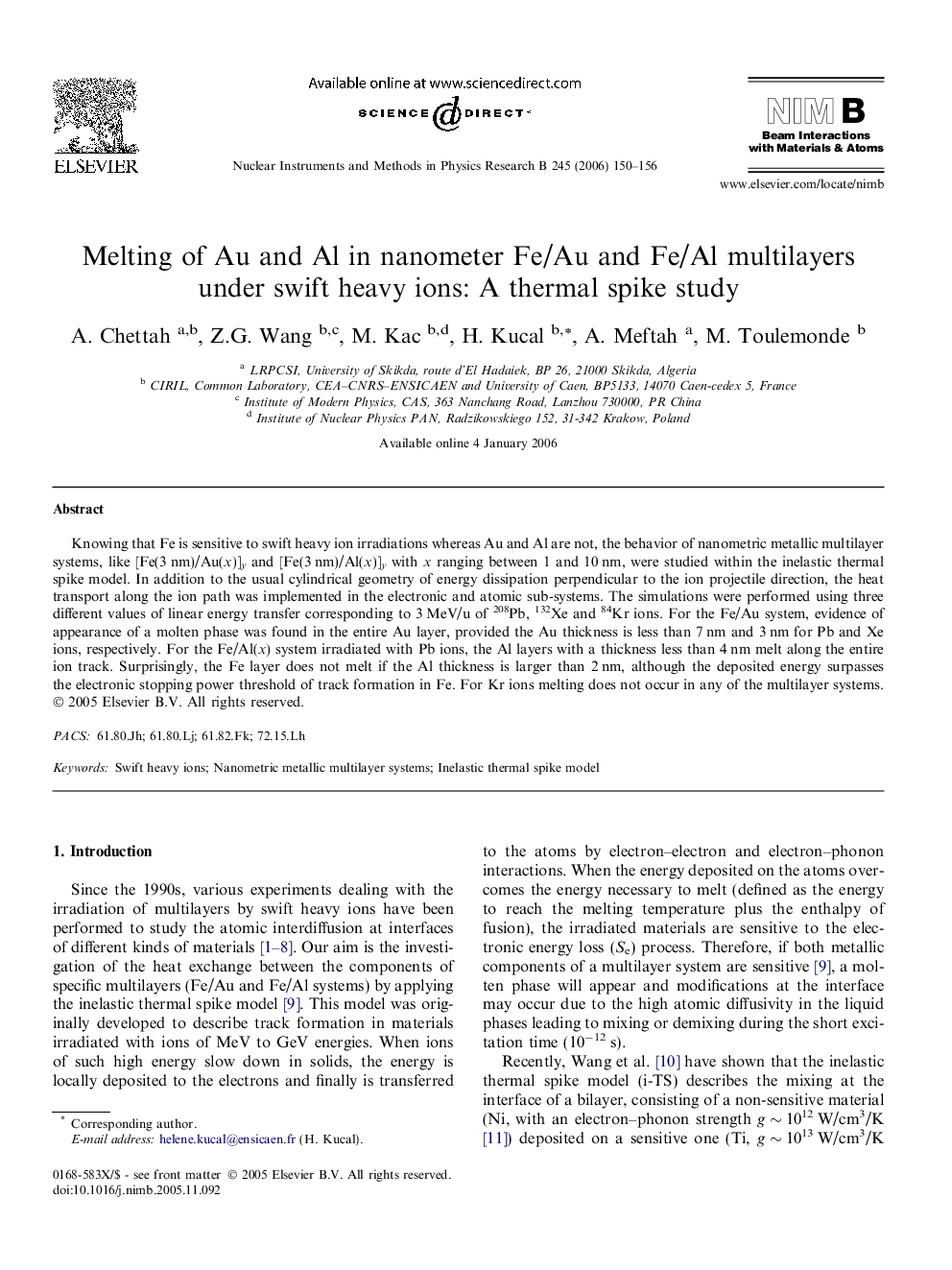| Article ID | Journal | Published Year | Pages | File Type |
|---|---|---|---|---|
| 1687163 | Nuclear Instruments and Methods in Physics Research Section B: Beam Interactions with Materials and Atoms | 2006 | 7 Pages |
Abstract
Knowing that Fe is sensitive to swift heavy ion irradiations whereas Au and Al are not, the behavior of nanometric metallic multilayer systems, like [Fe(3Â nm)/Au(x)]y and [Fe(3Â nm)/Al(x)]y with x ranging between 1 and 10Â nm, were studied within the inelastic thermal spike model. In addition to the usual cylindrical geometry of energy dissipation perpendicular to the ion projectile direction, the heat transport along the ion path was implemented in the electronic and atomic sub-systems. The simulations were performed using three different values of linear energy transfer corresponding to 3Â MeV/u of 208Pb, 132Xe and 84Kr ions. For the Fe/Au system, evidence of appearance of a molten phase was found in the entire Au layer, provided the Au thickness is less than 7Â nm and 3Â nm for Pb and Xe ions, respectively. For the Fe/Al(x) system irradiated with Pb ions, the Al layers with a thickness less than 4Â nm melt along the entire ion track. Surprisingly, the Fe layer does not melt if the Al thickness is larger than 2Â nm, although the deposited energy surpasses the electronic stopping power threshold of track formation in Fe. For Kr ions melting does not occur in any of the multilayer systems.
Related Topics
Physical Sciences and Engineering
Materials Science
Surfaces, Coatings and Films
Authors
A. Chettah, Z.G. Wang, M. Kac, H. Kucal, A. Meftah, M. Toulemonde,
